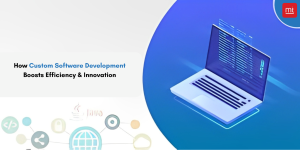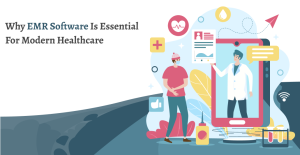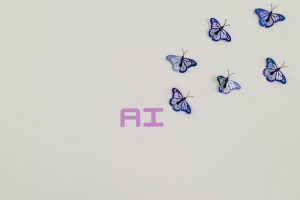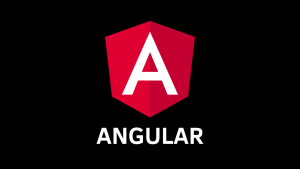7 Reasons Why Doctor On Demand App Development is Transforming Healthcare

The doctor on demand app development remains a revolution and the future model of the healthcare field. This innovative product constitutes a healthcare solution that links the patients and healthcare givers conveniently, thus introducing an effective paradigm shift that transforms the patient-physician relationship even as it enhances access to the solutions. Introducing the utilization of advanced technologies and integrating them with healthcare not only addresses emergent health problems but also paves the way to more efficient and patient preferable healthcare.
What is the concept of the Doctor On Demand App?
Doctor On Demand app allows patients to consult healthcare providers on their mobile devices, be it their mobile phones or computers. These include teleconsultations, prescription delivery, and management of patient records aspects, which, in a way, aim for better access to health services for all.
Vital Features of a Doctor-on-Demand App
User-Friendly Interface:
The application should have a simple and appealing layout and design that does not confuse users and presents the services in an easily understandable manner.
Accessibility: The app must be usable for disabled people and require components that can be customized, such as the size of the font and voice prompts.
Profile Management:
Enable patients to build their own and manage their profile, including medical history, the list of medications, and other drastic reactions.
Doctor Profiles: Doctors should be described in detail, including their education, specialization, and patients’ feedback.
Appointment Scheduling:
A usable and efficient function must be developed to enable the users to schedule appointments for consultations, reschedule them, or cancel them.
Availability Calendar:
Show doctors’ time slots and let the user select the preferred time slot they can attend.
Video Consultations:
Allow physicians to arrange virtual visits with patients and guarantee that the communication is as safe and protected as a visit to the clinic.
Technical Support: Provide assistance, particularly with technical problems that may arise with the video call implementation.
Prescription Management:
Make the doctors use electronic prescriptions to send to the users to view and forward them to the pharmacy.
Medication Reminders: Design the option to set reminders for the patient to take their medicines on time and observe features of the medication schedule.
Payment Integration:
Ensure the addition of safe methods for payment of the consultation charges through credit/debit cards, mobile money, and insurance billing.
Transparent Pricing: Clearly communicate about consultation fees and how they should be paid.
Health Records Access:
This lets the users create and retrieve personal documents that include previous appointments, test details, and treatment.
Data Security: Ensure that all health records are kept safe, the files are encrypted, and that you follow the laws on privacy.
Communication Tools:
Add a feature that will enable users to chat online with their physicians if they are not physically present.
Notifications: For appointment reminders, prescription refills, and any information concerning health.
Necessary Features
- Video Consultations: Patients can have real-time virtual visits with their doctors, during which they can undergo a real comprehensive examination and consultation without physically visiting the hospital.
- Prescription Services: Following consultation, doctors can prescribe drugs that patients can buy over the counter or order to be delivered to them.
- Medical Records Management: They bring in secure medical records management that allows patients and doctors to get easy access to the patient’s health records.
- 24/7 Availability: Requests are that they are on-demand apps that operate twenty-four hours a day, Seventh, therefore ideal for conditions that may require a doctor’s attention at night.
Benefits of Doctor On-Demand Apps
Eliminating Travel Time: People will not need to walk long distances to a health care provider, enhancing the accessibility of health care to people in areas that are considered remote or have few facilities.
Flexible Scheduling: Doctor On Demand apps permit flexible appointment scheduling, thus fitting a patient’s or any health care provider’s calendar.
Reduced Overhead Costs: Virtual consultations entail little or no need for infrastructure to support it, hence low overhead costs to practices. Affordable
Consultations: It is also noted that consultations conducted online are less expensive than clinical ones, thus expanding the availability of healthcare services to more patients.
Early Diagnosis and Treatment: Doctor On Demand mobile applications enhance people’s access to medical care, implying that patients will seek treatment early, thus improving disease diagnosis and treatment.
Continuous Monitoring: These apps continue to monitor chronic conditions, enabling better disease management among patients.
How Doctor On Demand Apps Work
User Registration and Profile Creation
Patients begin by downloading the app and creating a profile, providing essential health information and preferences.
Booking an Appointment
Users can view available healthcare providers, choose the appropriate time, and then make a booking.
Conducting a Virtual Consultation
Then, patients establish a direct video call with the selected care professional for examination and consultation at the appointed time.
Receiving Prescriptions and Follow-Ups
Following the consultation, doctors can prescribe medications for patients to receive, and they can book follow-up appointments through the application.
Challenges and Limitations of Doctor on-demand App
Internet Connectivity Issues: Internet connectivity is vital in the usage of Doctor On Demand apps; in areas of poor connectivity, access proves to be challenging.
Device Compatibility: To reach more people, the app should function on different devices and operating systems, so compatibility checks are crucial.
Data Breach Risks: Preserving the patient’s data from acts of hacking and other related manifestations is a very important task that cannot be done without effective protection.
Compliance with Regulations: Doctor On Demand apps are also required to adhere to a set of guidelines regarding the usability and provision of Health applications and related services to their consumers; they have to operate under healthcare laws and standards, such as the Health Insurance Portability and Accountability Act (HIPAA), to protect patient data.
Future Prospects of Doctor On Demand Apps
Integration with Wearable Technology
Future advancements may see Doctor On Demand apps integrating with wearable devices, allowing for continuous health monitoring and data collection.
Expansion of Services
Mental Health Support: Delivering face-to-face consultations for mental health issues and providing couples therapy sessions. Chronic Disease Management: Better options for handling chronic conditions because of continued synchronous online appointments.
Global Adoption and Standardization
As telemedicine gains global traction, there will be efforts to standardize practices and ensure quality care across different regions and platforms.
Comparative Analysis with Traditional Healthcare
Convenience and Accessibility
Doctor On Demand apps offer unmatched convenience and accessibility compared to traditional healthcare, removing geographical and logistical barriers.
Cost Comparison
Telehealth visits are often cheaper than face-to-face appointments, so the overall cost of healthcare is lower, as are the expenses for doctors’ practices.
Patient Satisfaction
High patient satisfaction is reported due to the ease of use, accessibility, and timely care provided by Doctor On Demand apps.
Future of Telemedicine
Telemedicine forecasts given by specialists about what it will be like in the future and possible effects on the healthcare system.
Predictions for the Future of Telemedicine
Telemedicine forecasts are given by specialists about what it will be like in the future and its possible effects on the healthcare system.
Conclusion
The development of an on-demand doctor app also has great potential for the healthcare industry in the present and future. Moreover, the telemedicine app can increase accessibility. That means patients in remote areas or busy schedules can easily connect with doctors.
A custom on demand app development for doctors also improves patient care. With faster access to medical advice, patients can quickly diagnose and treat diseases. Now, you are fully equipped to have your own telemedicine app that yields successful results in the healthcare industry.






